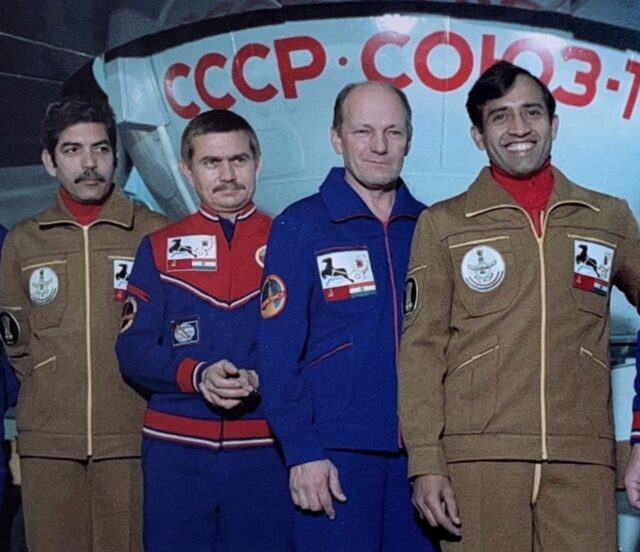“I hope the young generation gets inspired”. India’s space hero Wing Commander Rakesh Sharma (Retd) said marking the 40th Anniversary of the historic spaceflight of being the first Indian cosmonaut. He was reliving the pride that every Indian felt exactly 40 years ago. That was when he became the first Indian to venture into space. Sharma was speaking virtually at the Russian Centre in the national capital. He did much reflecting on his time in space. He also talked about the Gaganyaan crew training for the first planned Indian-launched manned flight into space. The four Indian astronaut-designates have trained in Star City in Russia. Sharma, India’s first cosmonaut also trained at the same place.
“People have often asked me whether the current group of four received the same training I did. And I think the answer to that is yes”, Sharma said. He went on to talk about the change in technology in the last 40 years. He talked about improvements and reliability in technological displays and components. But, he added, “the human being hasn’t changed. Therefore, the way we condition the human body to face the rigours of space travel hasn’t changed.”
“Sharma’s belief in the human body and spirit continues to inspire the next generation, though the story itself may not be as widely known.” Picked from a squad of over 50 fighter pilots, he underwent a battery of grueling tests. On April 3, 1984, Sharma was selected for the Soviet Soyuz T-11 mission. Not many, though, will remember that his standby was Ravish Malhotra, who retired as an Air Commodore.
Rakesh Sharma’s iconic words “Saare jahan se achcha hain” are legendary. He was replying to then Prime Minister Indira Gandhi, asking him what India looked like from space. The story, as space scientists said at the event at the Rusian centre was so magical because it was impossible. Despite India not being a space power at the time, Rakesh Sharma’s selection made the impossible possible.
40 years on, Group Captain Prasanth Balakrishnan Nair, Group Captain Ajit Krishnan, Group Captain Angad Pratap, and Wing Commander Shubhanshu Shukla are India’s astronauts-designates for Gaganyaan, India’s first planned crewed space mission. The four astronauts trained at the Yuri Gagarin Cosmonaut Training Centre, the same place that Sharma did.
Russia’s Deputy Chief of Mission Roman Babushkin also spoke at the 40th anniversary of the historic spaceflight of the first Indian cosmonaut. Referring to India-Russia space ties, the diplomat pointed out that the then Soviet Union, now Russia, remained India’s friend and partner in space. “We need to go back to 1975 when the Soviet Union launched Aryabhata, India’s first satellite, and then the Bhaskara in 1979. Now, India having developed its space programme, enjoys the status of a space superpower,” he said.
Coming to other matters on Russia-India cooperation in space, the diplomat said both countries will be “working together to promote dialogue in the United Nations Outer Space Committee to help prevent an arms race in space. Focusing on the UN’s decision: “The UN approved a draft resolution in December last year, after Russia submitted it for consideration,” Babushkin said. The Russian DCM further explained that the resolution was titled “Do Not Deploy the First Weapon in Space.” He said it received support from 127 countries.
There are many important discussions ahead, and significant work is needed in the space sector. But, India’s Gen Z space enthusiasts ensured the evening belonged to Rakesh Sharma. One told us, “Though I was not born then, my mother always made sure to tell me what Rakesh Sharma had achieved. And with Chandrayaan-III and Gaganyaan soon becoming a reality, we will also have a history to tell other generations. Of course, each story we tell will begin with Rakesh Sharma.”
















